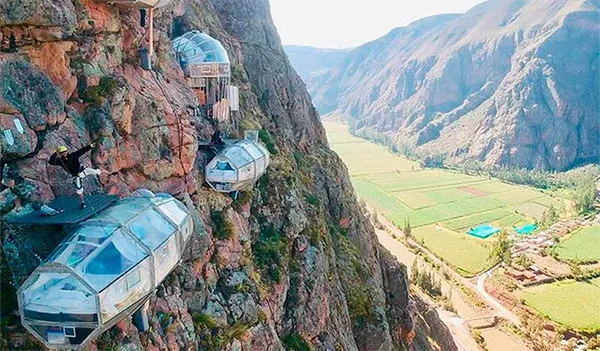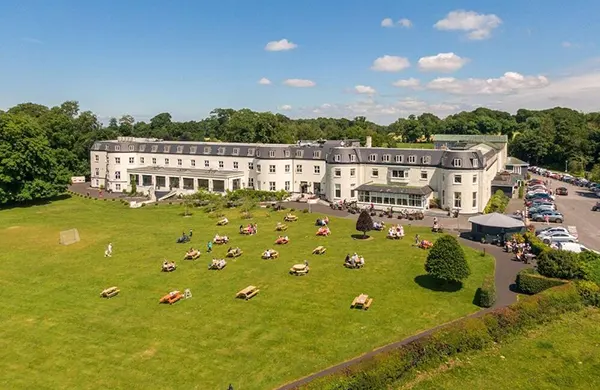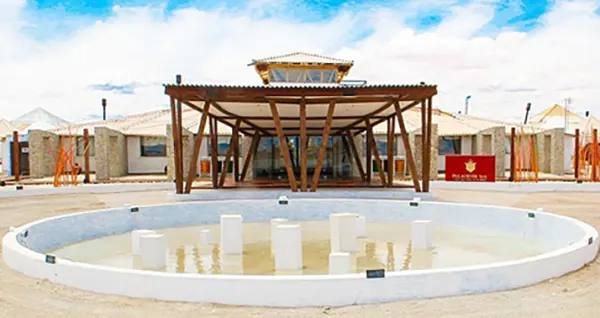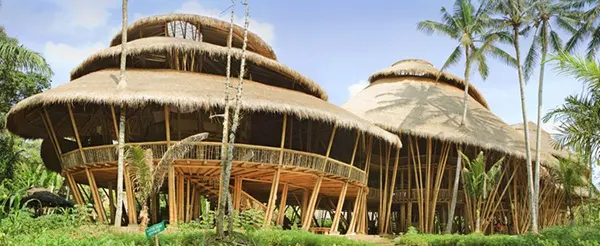
Green Village in the Heart of Bali’s Jungle: A Visionary Bamboo Hotel Built Without Nails
Green Village in Bali is a groundbreaking example of sustainable architecture and conscious tourism. Nestled deep within the Ayung River valley near Ubud, this collection of bamboo homes is far more than a luxury eco-stay — it is a pioneering project in regenerative design. Built entirely by hand and without nails, Green Village showcases how ecological integrity and refined comfort can seamlessly coexist.
The Architectural Philosophy Behind Green Village
Green Village is the brainchild of Elora Hardy and the Ibuku team — a group of designers, engineers and bamboo specialists dedicated to redefining modern living. Their core principle is to work with nature, not against it, by using bamboo, one of the fastest-growing and most renewable materials on the planet. The structures are crafted without metal fastenings, relying on age-old joinery techniques adapted for modern needs.
This architectural approach is not just about aesthetics. Each curved wall, open-air room, and hand-bent beam serves a structural, environmental and philosophical purpose. The village’s homes are designed to breathe with the jungle — harnessing natural airflow and daylight, thus eliminating the need for excessive artificial cooling or lighting.
Additionally, the building process itself is deeply rooted in community involvement and education. Local craftsmen are trained in bamboo construction, creating jobs and preserving cultural skills that have existed for generations, while also engaging in responsible development practices that support the environment.
Why Bamboo Makes a Better Building Material
Bamboo is a superior material for tropical construction due to its strength-to-weight ratio, renewability and natural resistance to earthquakes. It matures in just 3 to 5 years, compared to hardwood trees that take decades. This makes it an ideal solution in areas like Bali, where ecological preservation is vital and urban sprawl poses ongoing challenges.
Moreover, bamboo’s flexibility allows for dynamic, fluid forms that wouldn’t be possible with conventional construction materials. This gives Green Village its iconic appearance — homes with spiralling staircases, flowing balconies and tiered roofs that resemble natural organisms rather than human-made dwellings.
From a climate-conscious perspective, bamboo also absorbs carbon dioxide at a rate significantly higher than most tree species. Each structure in Green Village is therefore not just carbon-neutral but actively climate-positive, contributing to a healthier planetary future.
Living Among the Trees: A Day in Green Village
Guests and residents in Green Village enjoy an immersive experience — waking up to birdsong, watching monkeys play in nearby canopies, and bathing in open-air bathrooms surrounded by foliage. Each home is a standalone piece of art, with bespoke interiors, locally sourced furniture, and panoramic jungle views.
There’s no separation between the indoor and outdoor environments. Walls are often made of woven bamboo, floors are polished by hand, and large windows welcome both the morning breeze and sunset hues. Instead of isolating from nature, Green Village encourages residents to synchronise with its rhythms.
Connectivity is available but discreet. Wi-Fi, lighting, and water systems are all installed using low-impact techniques, ensuring that comfort is present without overpowering the ecological purpose of the project. Each element — from flooring to ceiling — supports the ethos of minimal environmental interference.
Community, Culture and Conscious Design
What makes Green Village unique isn’t just its homes, but the community it nurtures. Families, creatives, digital nomads and eco-entrepreneurs live side-by-side, sharing a philosophy of conscious living. Many are involved with the nearby Green School — a renowned educational centre that follows sustainability-driven curriculums.
Workshops, community dinners, and guided bamboo tours foster human connection and shared purpose. Guests are encouraged to engage in the design process, whether through architecture classes or volunteer sessions with local bamboo artisans. Green Village thus becomes more than accommodation — it’s a lifestyle and learning hub.
The cultural link with Balinese traditions also runs deep. Local ceremonies are respected and incorporated into village life, maintaining harmony with the spiritual significance of the land. This balance between modern ecological innovation and traditional wisdom is what gives Green Village its soul.
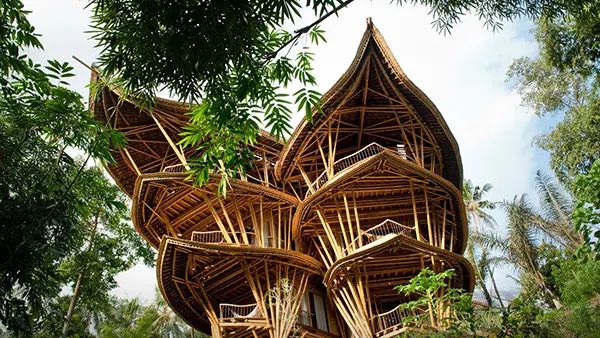
A Model for the Future of Travel and Architecture
As the global travel industry shifts towards responsible tourism, Green Village stands out as a blueprint for future developments. It proves that luxury does not require excess, and that meaningful travel experiences can go hand-in-hand with environmental guardianship.
Developers, architects and policymakers now visit Green Village as a living case study. The project has inspired similar bamboo-based structures in Thailand, Costa Rica and Mexico, reinforcing the viability of large-scale regenerative building practices. This ripple effect is essential in addressing the climate and housing crises.
Even more significantly, Green Village continues to evolve. New homes are being added with improved design techniques, the bamboo farming infrastructure is expanding, and partnerships with global universities support ongoing research in renewable architecture.
How to Visit or Join Green Village
Green Village is accessible via private tour or rental bookings. Guests can choose from several residences, each with distinct themes and features — from riverside villas to multi-level spirals nestled in the trees. Most stays include access to workshops and guided experiences in bamboo design.
For those who wish to live there, property sales are available for individuals aligned with the project’s core values. Buyers are carefully selected to maintain the village’s vision and environmental integrity. Owning a bamboo home here means becoming part of a growing movement — one that values harmony over consumption.
In February 2025, Green Village continues to expand its outreach, offering retreats, eco-education initiatives, and sustainable architecture residencies. It remains one of Bali’s best-kept examples of how the future of living can be beautiful, ethical, and deeply connected to the Earth.

